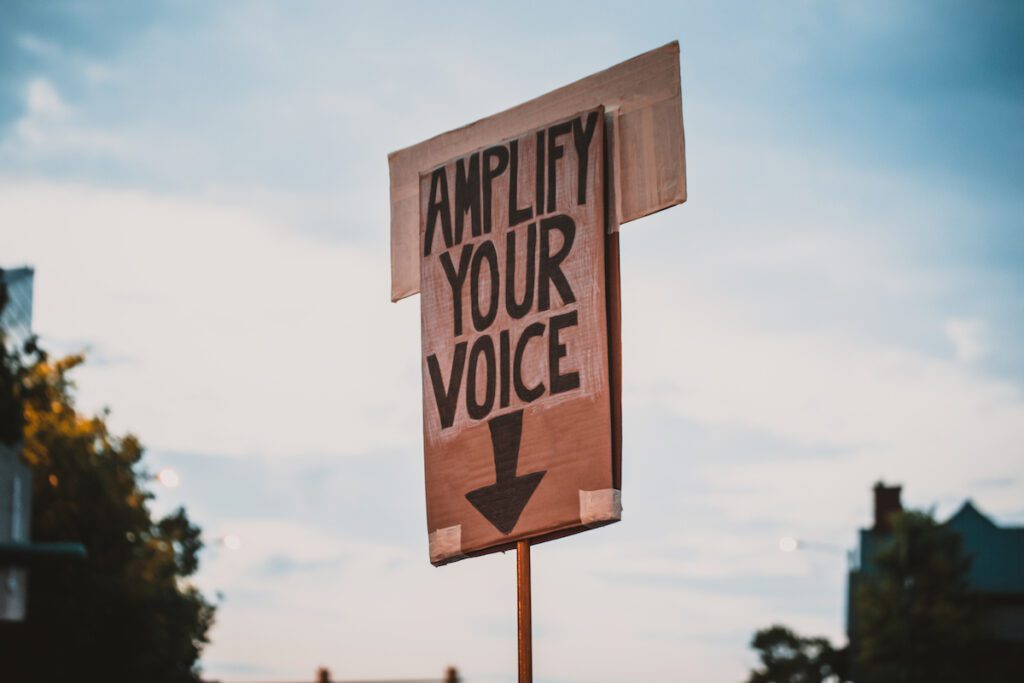Last updated on December 28th, 2022
Writing in the third person can be helpful for writers looking to tell a story from a more objective point of view. By using pronouns like “he,” “she,” and “they” to refer to the characters, the narrator can remain separate from the story and present events from an outsider’s perspective. This way, readers can better understand the characters, their motivations, and the consequences of their actions. It can also add an extra layer of complexity to a story by allowing readers to form their own opinions on the characters and what they are going through, creating suspense and building tension as readers wait to find out what will happen.
However, writing in the third person and maintaining a robust and unique voice can be challenging. This post will discuss writing in the third person without losing your voice, including tips and tricks for keeping your style and avoiding common mistakes. We’ll also survey the different third-person perspectives and provide examples to help you choose the best one for your story.
Defining Third Person Perspective
There are three main types of third-person perspectives: omniscient, limited omniscient, and objective.
The omniscient third-person perspective allows the narrator to reveal the thoughts and feelings of multiple characters. This type of perspective can provide a more comprehensive view of the story and enable the reader to see the events from multiple points of view. An all-knowing narrator has access to the inner workings of all characters in the story and can traverse any point in time. They can offer readers their personal views as well as the perspectives of the characters.
Limited omniscient third-person perspective, sometimes called “close third,” is when the narrator only reveals only one character’s inner thoughts and feelings. The narrator follows one character closely while still sticking to the third-person narrative. This can be done for the entirety of the story, or the author can switch the POV between different characters for different parts. This limited perspective helps the author control what information is given to the reader, creating interest and tension. This type of perspective allows the reader to experience the story through the eyes of a single character and can help create a more intimate, immersive reading experience.
In the third-person objective perspective, the narrator remains completely separate from the story and only presents the actions and events as they happen, without revealing any emotions or thoughts of the characters. The story is told with an unbiased voice, allowing the reader to feel as if they are watching the events unfold from afar. This style of narration gives the reader a sense of being a spectator, looking in on the story and overhearing what is taking place, and can be useful for creating a more objective, unbiased view of the story.
Here are some examples to illustrate the difference between perspective types:


- Omniscient third person: “As Sarah walked through the park, she couldn’t help but feel a sense of nostalgia. Meanwhile, across town, John was having a completely different experience. He was running late for work and feeling stressed out. As he rushed through the crowded streets, he couldn’t wait to get to the office and start his day.”
- Limited omniscient third person: “As Sarah walked through the park, she couldn’t help but feel a sense of nostalgia. She had spent so many hours here as a child, running through the grass and climbing the trees. Now, as an adult, she felt a sense of longing for those simpler days.”
- Third-person objective perspective: “Sarah walked through the park, stopping to admire the flowers and watch the children playing. John, meanwhile, was running late for work and hurried through the crowded streets. He finally arrived at the office, out of breath and flustered.” In this example, the reader can observe the story’s events but doesn’t have insight into the characters’ inner experiences.
Why Write in Third-Person Point of View
Some of the benefits and reasons for choosing to write in the third person include the following:
- Objectivity: Writing in the third-person point of view allows the writer to maintain an objective, unbiased tone if needed. The events can be presented as they happened, without the filter of opinion or emotion.
- Distance: Third-person POV creates a sense of space between the narrator and the story’s events, which can help convey a more objective and detached perspective. Having the reader feel more removed from the story can also be used to create additional suspense or mystery.
- Flexibility and Narrative Control: Third person allows options in terms of the perspective or perspectives from which the story is told. The narrator can describe events from the perspective of multiple characters or from an omniscient point of view that knows everything about the characters and events. The author is also free to delve into the motivations of all characters.
- Clarity: It can be more straightforward to follow than first-person writing, as it avoids personal pronouns and allows the narrator to describe events objectively.
- Professionalism: Third-person writing is often preferred in more formal or professional contexts, as it can convey a sense of objectivity and impartiality.
The decision to write in the third person will depend on your specific goals and the needs of your story. It’s important to carefully consider which type of third-person will best serve the story and the audience and choose the one that best conveys the intended message and tone.
Tips for Maintaining Your Voice While Writing in Third-Person


Writing in the third person can be a challenging perspective for many writers, as it requires a careful balance between maintaining your own voice and staying true to the character’s experiences. Here are a few tips to help you write in the third person without losing your voice:
- Establish a clear narrative voice: Establishing a strong narrative voice is an important part of maintaining your own writing style. Think about the type of narrator you want to use and ensure they have a distinct, consistent voice throughout your writing.
- Use strong, descriptive language: One way to add your own voice to a third-person narrative is to use descriptive language that conveys the emotions and experiences of the characters. Instead of simply stating what the character knows or is doing, try to paint a picture of how they feel and what they are thinking.
- Consistency is key: Maintain a consistent writing style and voice throughout your story, no matter what perspective you are using. This will help the reader feel immersed in the story and make it easier for them to connect with the characters.
- Experiment with different perspectives: There are several types of third-person perspectives, and the best one for you will depend on your style and the needs of your story. Don’t be afraid to play with different perspectives and see which works best for your voice.
- Stay true to yourself: Above all, it’s important to stay true to your own voice and not try to imitate someone else’s. Write in a way that feels natural and authentic to you. The more authentic and genuine your writing is, the more engaging it will be for your reader.
Common Mistakes to Avoid When Using Third-Person
Third-person point-of-view writing can be tricky, especially for novice authors. To help make the process easier, here are some common mistakes to avoid.
- Overusing pronouns: When writing in the third person, use character names to create a more engaging narrative. While it can be tempting always reach for pronouns like “he,” “she,” and “they” to refer to characters, this can lead to a narrative that feels distant and impersonal. Using character names instead of pronouns, readers will have an easier time following the story and connecting with the characters.
- Perspective Switching or “Head Hopping.” When the narrative shifts from one character’s point of view to another’s without warning, it’s confusing as it can make it difficult for them to follow the story and understand whose thoughts and actions are being depicted at any given moment. It’s generally best to stick to a consistent perspective within a scene or section of text and to clearly indicate any changes in perspective.
- Failing to establish a clear point of view and consistent voice: Establishing a clear point of view and consistent voice creates a cohesive narrative for the reader. A clear point of view will help the reader understand whose thoughts and feelings are being expressed throughout the story. A consistent voice also prevents the narrative from feeling disjointed and confusing.
- Avoid cliches when describing characters and their actions. Instead of relying on tired, overused phrases, try to find fresh and unique ways to describe your characters and their actions. This will create a more exciting and engaging narrative and will keep the reader interested in the story.
Conclusion
Writing in the third person can be a powerful tool for creating distance between the narrator and the story’s events, allowing for a more objective perspective and exploration of different perspectives to create unique and engaging stories. It can also be used to bring to life a character’s inner thoughts or ideas in a vivid and relatable way.
Take the time to carefully consider what perspective will best serve your story and audience. As you explore writing in this POV, don’t be afraid to experiment with different perspectives and find the one that works best for you and your writing style. Continue practicing and refining your skills with third-person writing and make it another arrow in your quiver to become a more confident and proficient writer. So, keep learning and have fun with it!




